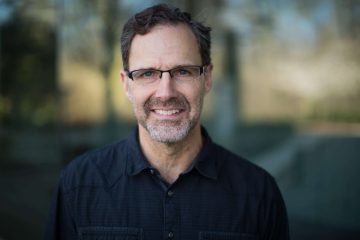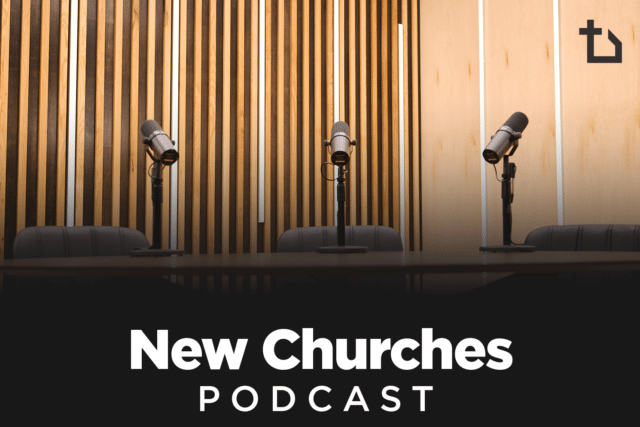Article
Rethink Multiplication
If our goal is rapid church multiplication, we must strive toward a movement that, as the saying goes, “breeds like rabbits.” Here are four characteristics of multiplying churches with movement cultures.

In 1,000 Churches, Ed Stetzer and Daniel Im discuss rapid reproduction of churches and compare the gestation periods of elephants and rabbits. Elephants carry one calf for a gestation period of nearly two years, then nurse it for three years after birth before reproducing again. On the other hand, rabbits carry a litter of typically 14 babies for just one month. Then, minutes after giving birth, that rabbit can become pregnant again, repeating the cycle.
There may be a time and a place when an elephant-type approach is appropriate in the church. But if our goal is rapid church multiplication, then we must strive toward a movement that, as the saying goes, “breeds like rabbits.”1
Multiplication Is a Mindset
Perhaps the first thing that should be said regarding church planting and movements is that it has to be a mindset. We must have a “rabbit” kind of mentality that will not only change the way we think about church, mission and multiplication, but it will begin to shape the very way we function as the church.
Albert Einstein’s famous quote rings true here, “We can’t solve problems by using the same kind of thinking we used when we created them.” If we apply that to the church, then, “We cannot solve the problems of the church by using the same kind of thinking we used when we created those problems in the first place.” We can’t keep thinking and doing what we have already done and expect different results. We must rethink how we understand and live out the life of the church if we wish to see a multiplication movement.
Make it a discipline to think movement, not institution. If you identify yourself as a movement, then you will eventually start acting like one.
The Makeup of a Multiplication Movement
What are the tangible characteristics of multiplying churches? Here are four aspects that contribute to a movement culture.
1. God’s mission is central
A church focused on real movement has a strong emphasis on the missio Dei. It is God who has a mission to set things right in a broken world, to redeem and restore it to what He always intended. A movement church understands that mission is not the invention, responsibility or program of the church. Instead, they see that mission flows directly from the character and purposes of a missionary God.
A multiplying church not only understands that the mission is God’s but also recognizes that His mission is larger than their individual church. They live out the reality that God’s primary activity is in the world and that their responsibility is to be sent into the world to participate in what He is already doing. As a result, the church does not simply send missionaries. They view their church as the missionary.
2. All God’s people are activated
Multiplication movements only succeed when they equip all God’s people. Every believer has potential to change the world. This transformation occurs more often through the ordinary than the extraordinary. Our job as church leaders is to bring it out. As Tim Keller describes this movement, “In every seed is the potential for a tree, and in every tree the potential for a forest, but all of this is contained in the initial seed.”2 In a movement church, everyone gets to play. No one sits on the bench.
3. Adaptive leadership and structures
A movement church has leadership that knows how to move a church and keep it moving. This type of leadership highlights apostolic and prophetic roles. The apostolic person leads with a positive vision of what can be, while the prophetic tends to call the status quo into question.
Multiplication needs adaptive leadership, people who can help the church transition to a different, nimbler version of itself. Such leaders don’t necessarily have to be highly creative innovators, but they must be people who can move the church into adaptive modes capable of tackling adaptive challenges. These people create the conditions for change and innovation.
In movement-focused churches, the effectiveness of the leaders is not measured by what they accomplish but by how the people of God are equipped, organized and inspired to participate in God’s mission in the world. This leadership and structure is geared toward disciple making. In the makeup of a movement, discipleship is the engine for everything. Without it, the church will drift away from its core calling.
As J.R. Woodward and Dan White write:
“Movement occurs when the making of mission-shaped disciples—who live in the world for the sake of the world, in the way of Christ—goes viral. Movement is about developing structures and systems that catapult people into mission, where reproducing discipleship groups, missional communities, churches and networks of churches is a natural part of its DNA. It’s the ripple effect: throwing a rock into a pond creates one ripple and then another and another, till ripples cover the whole pond.”3
4. APEST, with emphasis on the A
APEST denotes the roles of apostle, prophet, evangelist, shepherd and teacher in Ephesians 4. Keller notes that all APEST ministries are vital, but the apostolic role leads to movement. As Keller writes, “This is not an emphasis of importance or priority; it is one of purpose and design.”4 Apostolic people push against current boundaries and propel Christianity into new areas. If you remove apostolic leaders, you won’t see multiplication movement.
For more on church multiplication, download Brad Brisco’s free ebook “Rethink: 12 Missiological Principles for Church Multiplication.”
Notes:
1 Ed Stetzer and Daniel Im, 1,000 Churches (Nashville: Lifeway Christian Resources, 2017), 20.
2 Tim Keller, Serving a Movement (Grand Rapids, MI: Zondervan, 2016), 261.
3 J.R. Woodward and Dan White Jr., The Church as Movement (Downers Grove, IL: IVP Books, 2016), 23.
4 Keller, Serving a Movement, 263.




